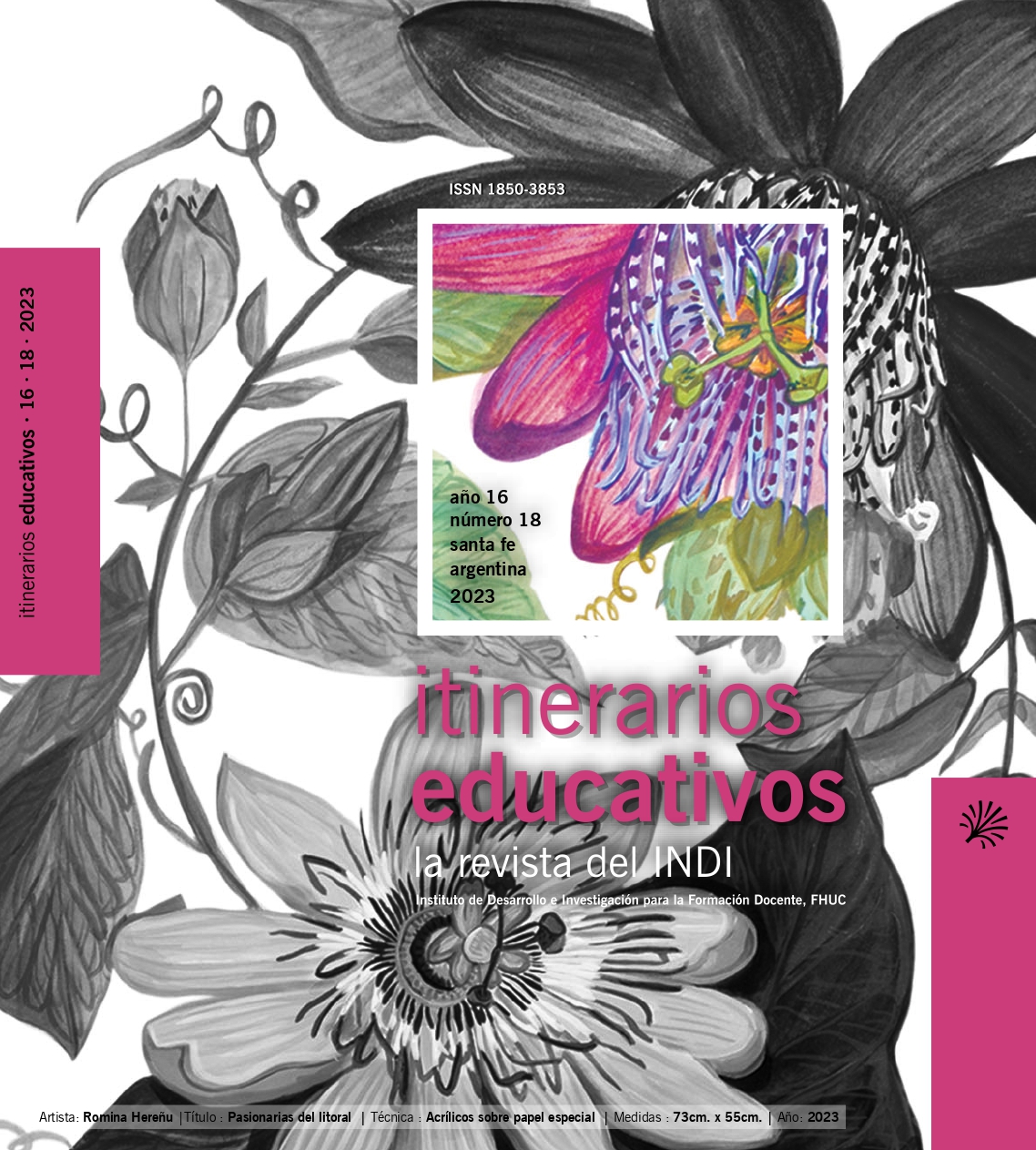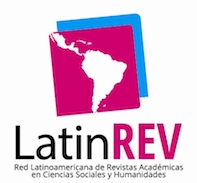Inequalities in the representations of the social class positions among young people in Argentina
DOI:
https://doi.org/10.14409/ie.2023.18.e0043Keywords:
educational trajectories, youth, social class inequalities, qualitative methodology, ArgentinaAbstract
This article identifies and characterizes the representations that young people from different Argentine social classes build on their class position and the positions of others. In particular, we seek to understand the symbolic dimension of inequality, investigating on which basis representations, otherness, hierarchies, distances, and closeness are built with those people who are considered similar and with whom they are visualized as different. The methodological strategy involved conducting 18 biographical interviews with men and women from different social classes from Gran La Plata. The people interviewed were part of the economically active population and were selected through an intentional sample. The data analysis was carried out following the proposal of the «socio-hermeneutic discourse analysis obtained in the biographical interviews» and with the assistance of Atlas ti. The results indicate that the representations of class positions are configured around processes of material and symbolic inequality and, within the latter, from othering and hierarchizations based on different cleavages that are assumed to be "natural" and are experienced as part of daily life and on a routine basis. Last, we found that family level of education, lifestyle and consumption are heavy markers of difference and inequalities regarding class positions.
References
Araujo, K. & Martuccelli, D. (2015). La escuela y la cuestión del mérito: reflexiones desde la experiencia chilena. Educ. Pesqui., 41, n. especial, 1503–1518.
Bayón, M. C. (2013). Hacia una sociología de la pobreza: la relevancia de las dimensiones culturales. Estudios Sociológicos, 91, 87–112.
Bertaux, D. (1999). El enfoque biográfico: su validez metodológica y sus potencialidades. Proposiciones, 29.
Biggart, A., Furlong, A. & Cartmel, F. (2008). Biografías de elección y linealidad transicional: nueva conceptualización. En R. Bendit, M. Hahn y A. Miranda (Comps.), Los Jóvenes y el Futuro (pp. 49-71). Buenos Aires: Prometeo.
Casal, J., Garcia, M., Merino, R. & Quesada, M. (2006). Aportaciones teóricas y metodológicas a la sociología de la juventud desde la perspectiva de la transición. Papers de Sociología, 79, 21–48.
Crego, M. L. (2014). La experiencia escolar más allá de la escuela: notas sobre un estudio de caso acerca de jóvenes y experiencia escolar. Question, 1, (43), 254–270.
Croghan, R., Griffin, C., Hunter, J. & Phoenix, A. (2006). Style Failure: Consumption, Identity and Social Exclusion. Journal of Youth Studies, 9, (4), 463–478.
Cuervo, H., & Miranda, A. (2015). Current Debates in Social Justice and Youth Studies. En Wyn, J. y H. Cahill H. (Eds.), Handbook of Children and Youth Studies (pp. 1–14). Singapur: Springer.
Dubet, F. (2014). Repensar la justicia social. Buenos Aires: Siglo XXI.
Erikson, R. & Goldthorppe, J. (1993). The Constant Flux: A Study of Class Mobility in Industrial Societies. Oxford: Oxford University Press.
Fuentes, S. G. (2013). Elecciones escolares: moral y distinción en la relación escuela–familias. Cuadernos de pesquisa, 43, 682–703.
Godard, F. (1996). El debate y la práctica sobre el uso de las historias de vida en las ciencias sociales. En R. Cabanes y F. Godard, Uso de las Historias de Vida en las Ciencias Sociales (s/d). Bogotá: Centro de Investigaciones sobre Dinámica Social, Universidad Externado de Colombia.
Goldthorpe, J. (1987). Social mobility and class structure in modern Britain. Oxford: Clarendon Press.
Gough, K.V. & Franch, M. (2005). Spaces of the street: socio spatial mobility and exclusión of youth in Recife. Children’s Geographies, 2, 149–166.
Jacinto, C., Fuentes, S. & Montes, N. (2022). Interrelaciones entre desigualdades sociales y educativas en el nivel secundario. Una revisión teórica, multidimensional y (post) pandémica. Propuesta Educativa, 31 (57), 12–30.
Jodelet, D. (1984). La representación social: fenómenos, conceptos y teoría. En S. Moscovici, Psicología Social II. Pensamiento y vida social. Psicología social y problemas sociales (pp. 469-494). Barcelona: Paidós.
Lamont, M. & Fournier, M. (1992). Cultivating Differences: Symbolic Boundaries and the Making of Inequality. University Chicago Press: Chicago.
Lamont, M. & Molnár, V. (2002). The study of boundaries in the social sciences. Annual review of sociology, 1, 167–195.
Lamont, M.; Beljean, S. & Clair, M. (2014). What is missing? Cultural processes and causal pathways to inequality. Socio–Economic Review, Advance Access, 3, 573–608.
Lemus, M. (2018). Articulaciones entre desigualdades y tecnologías digitales, un estudio de las trayectorias de vida de jóvenes de clases medias altas, La Plata 2012–2017. Tesis Doctoral. Universidad Nacional de La Plata.
Lister, R. (2004). Poverty. Cambridge: Polity Press.
Marradi, A.; Archenti, N. & Piovani, J. I. (2010). Metodología de las Ciencias Sociales. Buenos Aires: Cengage Learning Argentina.
Mauger, G. (1989). La «jeunesse» dans les «âges de la vie». Une «définition préalable». Temporalistes, 11. Chargé de recherche CNRS.
Mora Salas, M. & de Oliveira, O. (2014). Desafíos y Paradojas. Los Jóvenes frente a las Desigualdades Sociales. México: Colmex.
Muñiz Terra, L. (2018). Biographical events and milestones: a methodological proposal to analyze narratives of life. Forum: Qualitative Social Research, 19, (2), Art. 13.
Muñiz Terra, L. & Roberti, E. (2018). Las tramas de la desigualdad social desde una perspectiva comparada: hacia una reconstrucción de las trayectorias laborales de jóvenes de clases medias y trabajadoras. Estudios del Trabajo, 55, 1–32.
Reygadas, L. (2008). La apropiación: Destejiendo las redes de la desigualdad. Ciudad de México: UAM. Anthropos Editorial.
Santos–Sharpe, A. & Nuñez, P. (2022). Desigualdades en la escuela secundaria argentina: recorridos escolares y proyecciones educativas. Íconos, 74, 15–32.
Saraví, G. (2009). Transiciones vulnerables: juventud, desigualdad y exclusión en México. México: CIESAS.
Saraví, G. (2015a). Juventudes Fragmentadas. Socialización, Clase y Cultura en la Construcción de la Desigualdad. México: FLACSO.
Saraví, G. (2015b). The youth experience of urban injustice: Space, class, and gender inequalities in México. En J. Wyn y H. Cahill (eds) Handbook of Children and Youth Studies (pp. 503-516). London: Springer.
Saraví, G. (2016). Miradas recíprocas: representaciones de la desigualdad en México. Revista Mexicana de Sociología, 78, 409–436.
Scott, J. (1994). Poverty and Wealth. Citizenship, Deprivation, and Privilege. New York: Longman.
Wright, E. (1992). Reflexionando, una vez más, sobre el concepto de estructura de clases. Revista Zona Abierta, 59/60.
Published
How to Cite
Issue
Section
License
Those authors who have publications with this magazine, accept the following terms:
The authors will retain their copyright and guarantee the journal the right of first publication of their work,
which will be simultaneously subject to the Creative Commons Recognition License that allows third parties to share
the work whenever its author and first publication this magazine.
Authors may adopt other non-exclusive licensing agreements for the distribution of the published work (eg, deposit
it in an institutional telematic file or publish it in a monographic volume) whenever the initial publication in this
journal is indicated.
Authors are allowed and advised to disseminate their work through the Internet (eg, in institutional telematic files
or on their website) before and during the submission process, which can produce interesting exchanges and increase
citations of the published work. (See The effect of open access).
















